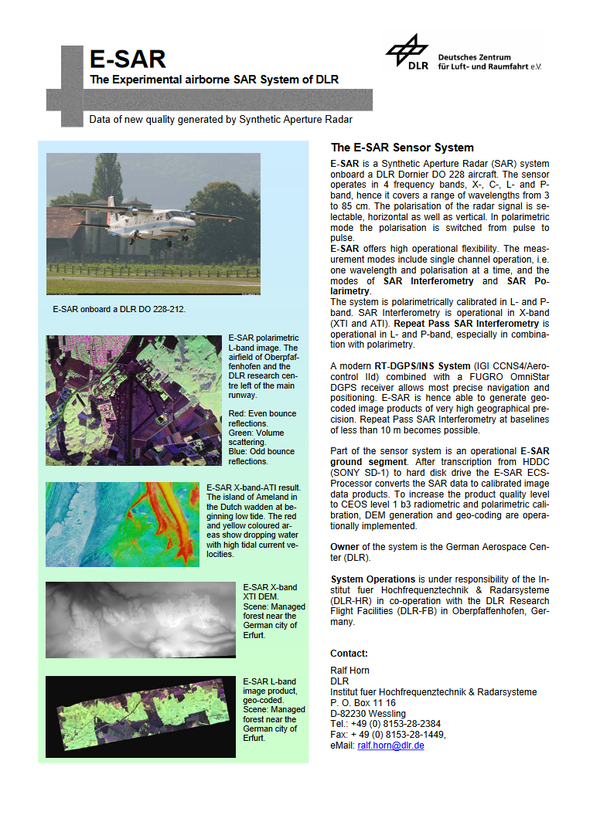The Airborne SAR System
Details of the F-SAR
F-SAR is the successor to the E-SAR system. It allows radar images to be recorded in five carrier frequencies. These are all fully polarimetric. Single-pass interferometry is possible in S-band and X-band.




